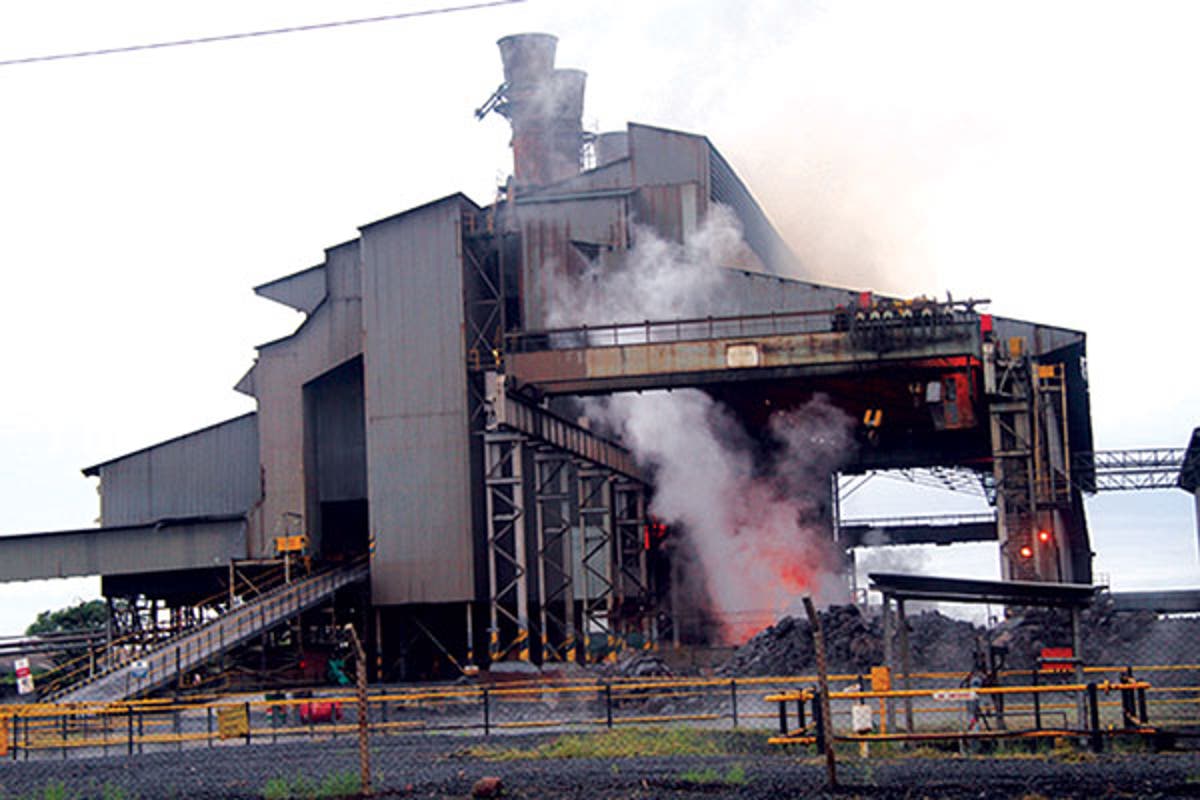Two roads for growing Zimbabwean industry
The percentage of Zimbabwe’s gross national product coming from manufacturing has been steadily falling while that for services has been rising.
This is a trend that is natural and desirable in developed economies, where manufacturing has basically reached its peak and flooded the market with all that can absorbed, so that ongoing creation of new wealth has to be in the services sectors, although some post-industrial economies, such as Britain’s, have probably overdone this.
But for a developing country, there is need to establish that manufacturing base that can later support and back-up the expanding services sector, and Zimbabwe is definitely in this group.
More importantly, Zimbabwe is a resource rich country, with its exports totally dominated by raw materials, often in a very raw form so that other people in other countries can have the factory jobs making things from Zimbabwean metals, tobacco, cotton lint and the like.
Even when we have to export products that are still called raw materials, these should have all the initial processing done in Zimbabwe. An example would be metal alloys, where a major manufacturer somewhere else needs ingots that have precise percentages of iron, nickel, chrome, vanadium and the like. We should be selling the ingots, not the ores or the partly processed metals.
In his 2021 Budget, Finance and Economic Development Minister Prof Mthuli Ncube started addressing the need to boost manufacturing using two approaches: import substitution and, more critically, export of finished products.
Import substitution has an obvious charm. But it has limitations, and with the growth of freer trade in Africa needs to be carefully thought-out so that we create quality products with cost and price advantages that can do a lot more than satisfy local demand. These will, within a few years have to be able to compete in a regional market, or even a continental market. In the end being able to supply 10 percent of the demand in Southern Africa for a particular product, or even 1 percent of the African demand, might be more rewarding that supplying 100 percent of Zimbabwean demand.
This rider is important. Our local industry started growing in the settler days in competition with external suppliers. We even started car assembly in this era, largely because British or British-based manufacturers found a cost advantage in transporting kits rather than completed cars; you could fit a lot more kits on a railway wagon than full cars, and the risks of damage were far lower.
UDI saw the dramatic expansion in manufacturing, based entirely in import substitution in what suddenly became a close and tightly managed economy. It worked, as it had done in Eastern Europe after the Second World War, but the underlying problems in such an economy eventually came to the fore. Closed economies tend to lead to production of sub-standard and overpriced goods. That led eventually to consumer demand for imports, even when the local product was competitive on quality and price.
So import substitution is an important element in any industrial policy, and can be encouraged as Prof Ncube wants to encourage it, with modest tax concessions and Government procurement policies. These are allowed under world and regional trade rules, but total protection is now more difficult and will become ever more so.
That in turn means that the local products must meet quality standards, and here manufacturers should be seeking international standards and getting these adopted and registered with the Standards Association of Zimbabwe. Consumers expect price advantages with local products, but do not want to sacrifice quality.
That in turn will help open export markets. If Zimbabwean products have built a reputation for quality then markets will grow: ask any German engineering company about the value of a “Made in Germany” sticker on almost any item of machinery.
Prof Ncube, wanted to use Government procurement policies to push import substitution, with perhaps his insistence that Government bodies and parastatals use locally assembled vehicles exclusively as the biggest single plank in that area. He wanted to see local content rise to 30 percent, something that is possible since in the UDI era there was ever growing local content: seats, radiators, silencers and exhausts, and tyres for example.
This opens up more possibilities with a good relationship with selected external manufacturers. We can go further than just assembly and start looking at modest design changes if we keep the range of vehicles narrow and the volumes high.
Most corporate transport managers, for example, can get quite emotional about suspensions designed for glass-smooth roads in developed countries and might welcome a redesign that incorporates something a lot more robust in that area.
In the end, as with all out industrialisation, the final objective must be vehicles that can compete in a regional free-trade area. So the local content has to be higher quality than standard, design changes have to give a competitive advantage.
We have done this before. We once designed our own buses and while there were a couple of flaws, the extra-long length perhaps being a step too far, the basic idea was good. The managing director of that company reckoned his biggest sales point was the robustness of his product, and the ease of maintenance.
He had this picture on his desk of a bus with a grossly overloaded roof-rack shooting through a ford on a rural gravel road, and he said photo sold more buses than any advertising jingle.
The other plank of the Minister’s industrialisation policy was to manufacture from local raw materials for export markets, and here he took tobacco as the prime starting point. Local merchants do quite a bit of processing of leaf before export, getting the moisture content just right, cutting out stems where necessary, ensuring precise grading and the like. But we still export leaf.
The Minister would like to see containers of cigarettes instead going through border posts. There are a couple of small gaps in local production, mainly in oriental tobaccos that form a small percentage of most international blends, but that could be fixed in a single season since we do grow these already.
That sort of switch might well require encouraging major manufacturers to “set up shop” in Zimbabwe, as well as expanding our present local brands and figuring out how to create new markets for them. But a couple of local manufacturers have already carved out regional markets, even if smugglers take the cream off the profits. But where our criminals have created a market surely our legitimate business people can follow.
Cotton textiles seem another obvious export-orientated industry. We grow a quality product and need to start making and selling quality yarns and fabrics, rather than packing lint very tightly into a container for someone in south or east Asia to earn a good living making the raw materials for clothing manufacturers.
They only buy our lint because their farmers, who produce a lot anyway, cannot quite meet the demand of their own industrialists.
One Sadc country that has industrialised successfully and rapidly gives a good example of what can be done, Mauritius. At independence it grew sugar cane and exported sugar.
Now it feeds a vast variety of products into regional and international markets, as anyone having a good look at the small print on the back of a lot of products on our supermarket shelves can realise.
Zimbabwe, with more raw materials to start with and with an educated and entrepreneurial labour force, can surely do at least as well and probably a lot better.
Import substitution can help develop products and create brands, but so long as Zimbabwean manufacturers get fanatical about quality and price, they can go a lot further and start exporting as well.
So any long-term industrialisation policy must not only be to encourage ourselves to “Buy Zimbabwean” but also to make that little label on the back of the pack “Made in Zimbabwe” mean that quality is guaranteed.-ebusinessweekly.co.zw











